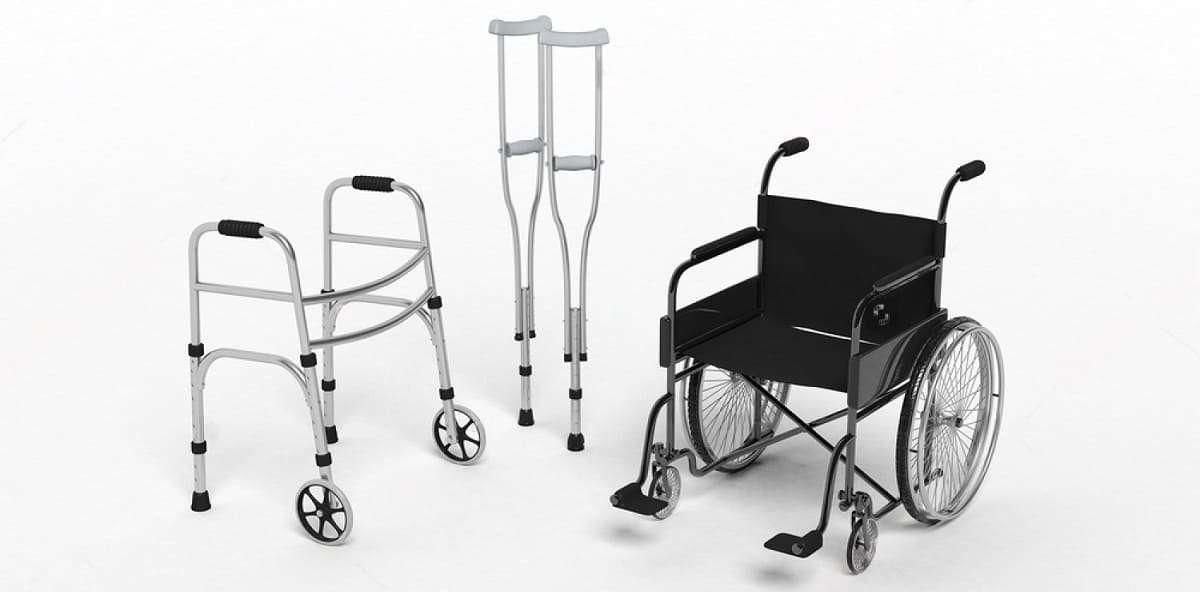Rehabilitation aids play a critical role in the recovery process for individuals recovering from injuries, surgeries, or dealing with chronic conditions. These aids help improve mobility, provide support, and enhance the overall quality of life for patients. This guide covers the types of rehabilitation aids, their uses, and how to choose the right ones.

Types of Rehabilitation Aids
Mobility Aids
- Canes and Walking Sticks: Provide balance and support for individuals with minor balance issues or leg strength weaknesses.
- Crutches: Used to reduce weight-bearing on one or both legs, aiding in the mobility of individuals with leg injuries or surgeries.
- Walkers and Rollators: Offer more stability than canes, with walkers being a fixed frame and rollators equipped with wheels and brakes for easier movement.
- Wheelchairs: Essential for individuals with severe mobility impairments, available in manual and powered versions.
- Scooters: Electric-powered devices providing greater mobility for individuals with limited walking ability but enough upper body strength to operate controls.
Support Aids
- Braces and Splints: Provide support and stability to joints and bones, aiding in recovery from injuries and surgeries.
- Orthotics: Custom-made shoe inserts or braces that correct foot and leg alignment issues, providing better support and reducing pain.
- Compression Garments: Help reduce swelling and improve blood flow, commonly used post-surgery or for managing conditions like lymphedema.
Exercise and Therapy Equipment
- Resistance Bands: Used for strength training and physical therapy to improve muscle strength and flexibility.
- Exercise Balls: Aid in balance training, core strengthening, and improving flexibility.
- Treadmills and Stationary Bikes: Provide cardiovascular exercise options for those who need low-impact workouts.
- Parallel Bars: Used in physical therapy settings to help patients practice walking and balance in a controlled environment.
Daily Living Aids
- Reachers and Grabbers: Extend reach for individuals with limited mobility, allowing them to pick up items without bending or stretching.
- Shower Chairs and Transfer Benches: Ensure safety and ease during bathing for individuals with mobility challenges.
- Raised Toilet Seats: Make sitting and standing easier for individuals with joint pain or weakness.
Cognitive and Sensory Aids
- Memory Aids: Tools like medication reminders, calendar clocks, and note-taking devices help individuals with cognitive impairments manage daily tasks.
- Hearing Aids: Improve hearing for individuals with hearing loss, enhancing communication and quality of life.
- Visual Aids: Magnifiers, large print materials, and screen readers assist those with visual impairments.
Choosing the Right Rehabilitation Aids
Assessment of Needs
- Consultation with Healthcare Professionals: Work with doctors, physical therapists, or occupational therapists to determine the specific needs and suitable aids.
- Individual Assessment: Consider the patient’s physical condition, the extent of their impairment, and their living environment.
Quality and Durability
- Material and Construction: Ensure aids are made from high-quality, durable materials to withstand regular use.
- Manufacturer Reputation: Choose products from reputable manufacturers known for producing reliable and effective rehabilitation products.
Comfort and Adjustability
- Ergonomic Design: Look for aids designed for comfort and ease of use, minimizing strain and discomfort.
- Adjustability: Select aids that can be adjusted to fit the individual’s size and specific needs, such as height-adjustable walkers or customizable orthotics.
Ease of Use
- User-Friendly: Ensure the aids are easy to operate and require minimal training or effort to use effectively.
- Maintenance: Consider the maintenance requirements and choose aids that are easy to clean and maintain.
Cost and Insurance Coverage
- Affordability: Compare prices and choose aids that offer the best value without compromising on quality.
- Insurance: Check with insurance providers to see if the cost of rehabilitation aids is covered under the patient’s plan.
Implementing Rehabilitation Aids
Training and Education
- Instructional Support: Provide training for patients and caregivers on the proper use of rehabilitation aids.
- Educational Resources: Offer manuals, videos, and other resources to ensure effective and safe use.
Monitoring and Evaluation
- Regular Assessments: Conduct follow-up assessments to monitor the patient’s progress and adjust aids as needed.
- Feedback Loop: Encourage feedback from patients and caregivers to address any issues or concerns promptly.
Integration into Daily Routine
- Gradual Introduction: Integrate aids gradually into the patient’s daily routine to ensure a smooth transition.
- Support Systems: Establish a support system involving family, caregivers, and healthcare professionals to assist in the effective use of rehabilitation aids.
